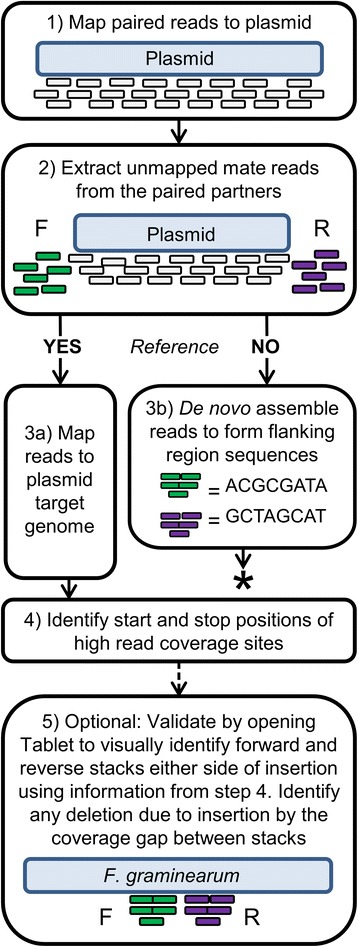Figure 2.

FindInsertSeq: Sequencing workflow to identify DNA tag insertion sites and corresponding flanking genomic sequences. Step 1, paired-end reads are mapped to the plasmid reference sequence, Step 2, extract unmapped mate reads from the paired partners that should contain sequences either side of the inserted plasmid sequence. Map the extracted mate reads to the F. graminearum reference genome which should form two stacks for each plasmid sequence insertion with one in the forward (F) orientation which are mated with the reads that originally mapped to the plasmid at the 5′-end and a stack with reverse (R) orientated matching reads originally mapped to the plasmid at the 3′ end. Step 3 a) the availability of reference genome is a prerequisite for this workflow. b) * if no reference genome is available de novo assembly of reads to identify flanking regions could be considered followed by BLAST and PCR analysis to characterise the insertion site. Step 4, to locate the stack chromosome(s) and bp positions, the mapped reads are sorted, positioned and printed to the command line. Additionally the results are printed to an individual sample text file. Open Tablet software [16] with the mapped genomic reference BAM file and proceed to the chromosome(s) and position(s) that were identified in Step 4 to visualise the insert flanking sequences and any deletion of reference sequence via the gap in coverage between the two stacks. When a reference genome assembly is either not available or both flanking sequences have not been detected due to the local incompleteness of the reference genome, then de novo assembly of the extracted unmapped mate reads can be used to reconstruct the sequences replacing steps 3 a through 5 with step 3 b.
